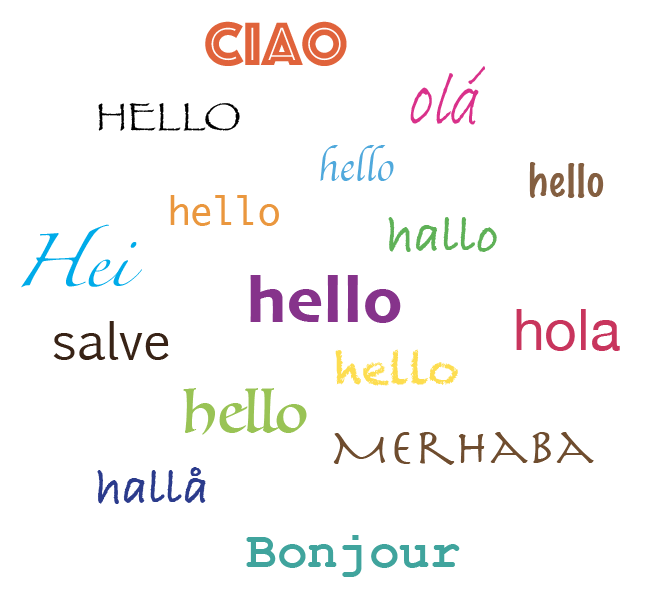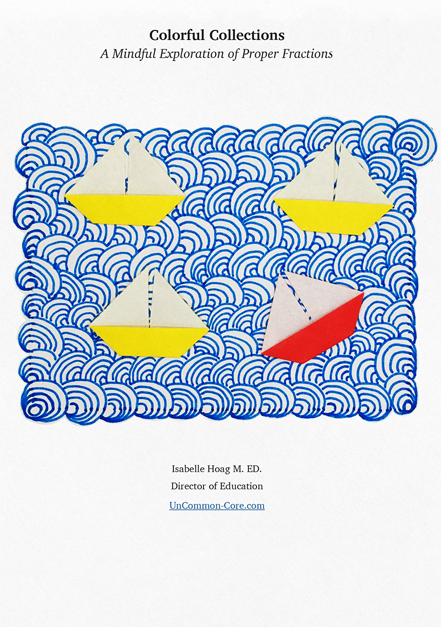
How do you want your students to describe equivalent fractions?
By rote definition memorized from the textbook? Nope!
Wouldn’t it be great if they used a combination of analogies, examples and counterexamples, as well as everyday language referencing various ways to model equivalence and sprinkled with academic vocabulary?
![]()
Find creative ways to help students make sense of equivalence.
Sharing real-world contexts in which we automatically recognize sameness is a good way to set the stage for understanding equivalent fractions:
Let art help:
You or the art teacher could help your students paint the same apple tree in different seasons. Autumn gives us yummy apples until the tree’s leaves change color and fall. Winter brings clouds and snow showing the dark silhouette of branches. With spring comes buds, and leaves. Summer means delicate flowers and waiting for apples. No matter how the tree looks, it is still the same apple tree. It just takes us a while to get to be able to recognize the tree in all seasons.
Art teachers can also design lessons on scale and proportions which are key ideas in both art and math.
Another approach would be to look into print making. Artists typically sign their prints on the bottom right side. On the bottom left they write the edition number. If there is a title it is written in the middle below the art. Interestingly edition numbers are written as fractions.
![]()
Let music help:
Can your students identify the same tune played in different octaves? How about different musical styles? or tempos? Let the music teacher know that your students are studying equivalent fractions.
Help students connect the idea that the essence of the melody is recognizable in spite of variations ~ just like fractions in simplest form and their equivalents.
Preview each song for suitable lyrics and messages before using in class! Ask your students if these covers are the same songs or not. Even if they think these are different songs, they should at least recognize that the characteristics which make the melody and song (tune and lyrics) unique are the same.
Mozart’s Variations on Twinkle Twinkle Little Star
Theme and Variation Brian Gossard Fun and safe for elementary students
Composer of the Month Theme and Variations Happy Birthday and other tunes
Identify covers of different songs: Carefully screen before you use them in class.
Tears of a Clown: Smokey Robinson and the Miracles 1967 and The English Beat 1980
Kentucky Woman: Deep Purple and Neil Diamond
Always on My Mind: Elvis and Pet Shop Boys
Invite parents or caretakers to help:
Cooking, doubling or halving recipes, and baking are fantastic ways for students to learn about equivalent fractions at home. Measuring objects in their bedroom in cubits and then in feet would also benefit their understanding. Other ideas you could share with parents include: searching for fractions at a hardware store, building bird houses or doll houses, folding origami models, or even looking at old family photos (gosh, mom, is that you when you were my age)!
![]()
Bring the principal (or a parent) into your class for a blind taste test!!
Prepare some mac and cheese ahead of time. Put it in several bowls and let students stir in some food coloring (if you dare). Cover the bowls and wait for your unsuspecting prey – um guest! (Fully brief the principal/guest on the topic in advance so they can play along.)
Have your students explain the experiment and then blindfold the principal. Gently wrap a giant bib on your boss ‘just in case.’ Take photos! Let students take turns feeding the principal different colored mac and cheese. Can the principal determine the color based on the taste?
Make sure to stress that the important quality which makes mac and cheese unique is its taste. The taste stays the same no matter what color it is. Have students explain how this relates to equivalent fractions.
Other food items to feed your principal, willing parent or brave students (after you check your school’s policies on food) include fruit-colored cereal pieces that are the same shape, instant mashed potatoes in various colors, pretzels dipped in different colors of frosting, pieces of bread with different colors of butter, or sips of colorful water. Enjoy!
Act it out: Have students take turns interviewing each other as reporters and ‘experts’-
“This just in – Angel, a fourth grade student from Montgomery, proves that five/tenths is actually the exact same number as one-half! Angel, tell us about this amazing discovery and how you were able to prove it!” (Be sure to check school policies before allowing students to video these interviews or show them in class!!)
“That’s right, John, let me show your audience this poster I created that proves beyond any doubt that five-tenths is equivalent to one-half.”
![]()
Look for counterexamples:
One of the best ways to understand what something IS – is to figure out what it IS NOT.
Sort fraction cards in two piles – equivalent to one-half vs. NOT equivalent to one-half. Later use three piles – less than equal to or greater than?
Work backwards:
Rather than teaching students how to identify fractions that are equivalent, start out by making equivalent fractions. A Fresh Look at Equivalent Fractions starts with the simplest form and builds equivalent fractions by multiplying by one.
Other ideas include connecting the idea of equivalent fractions to synonyms, translating words from other languages, and measuring with different units. This will prepare your students for modeling equivalent fractions with linear, area, volumetric, or durational representations.
![]()
Make sure students own the vocabulary:
Often students lack the vocabulary to describe what they are learning. One of the indicators that they really get the concept is that they can explain it to someone else. Hmmm. how can we help them describe equivalent fractions?
Whole numbers represent amounts. There is one name for each amount. Up until they start learning about fractions, your students have spent a great deal of time and effort learning how to count and calculate with whole numbers. Students are trained to search for the one, single, correct answer that will balance an equation.
Fractions represent numerical relationships. There are endless number pairs that represent the same whole/part relationship. Fractions represent values that may fall between whole numbers.
Numerators count the amount of unit fractions represented in the number. Numerators of equivalent fractions will share one or more factors.
The Fraction Bar indicates division. The vinculum shows that the numerator and denominator work together to make one number. Equivalent fractions will have the same quotient when the numerator is divided by the denominator.
Denominators show the number of unit fractions needed to make one whole number. Denominators of fractions that are equivalent will have factors in common.
In simplest form the numerator and denominator are the smallest combination of integers that represent that specific portion of the whole. The numerator and denominator do not have any common factors when a number is in simplest form. Equivalent fractions reduce to the same simplest form.
Equivalent fractions are the same number. They occupy the same place on the number line, have the same area, and the same quotient when the numerator is divided by the denominator. They can be exchanged for each other in equations.
![]()
Share This Story, Choose Your Platform!
Download Colorful Collections:
A Mindful Exploration of Proper Fractions
Help your students make sense of fractions.
I started teaching in 1987, which means I’ve collected many tips and tricks along the way. In this ebook, I share concepts, strategies, and classroom materials to help you make math sticky.
Along with this useful ebook, you will receive weekly emails from StickyMath@UnCommon-Core.com. I send information like: teacher tips, educational ideas, book reviews, curated lists, reviews of educational sites, and free first drafts of products that I’m creating for my TPT store. That way, you get helpful ideas and free stuff, while I get some feedback before I finalize products and put them up for sale.
I value your privacy. I will never sell your information. You may unsubscribe at any time.
All the best!
Isabelle
Isabelle Hoag M. Ed.

